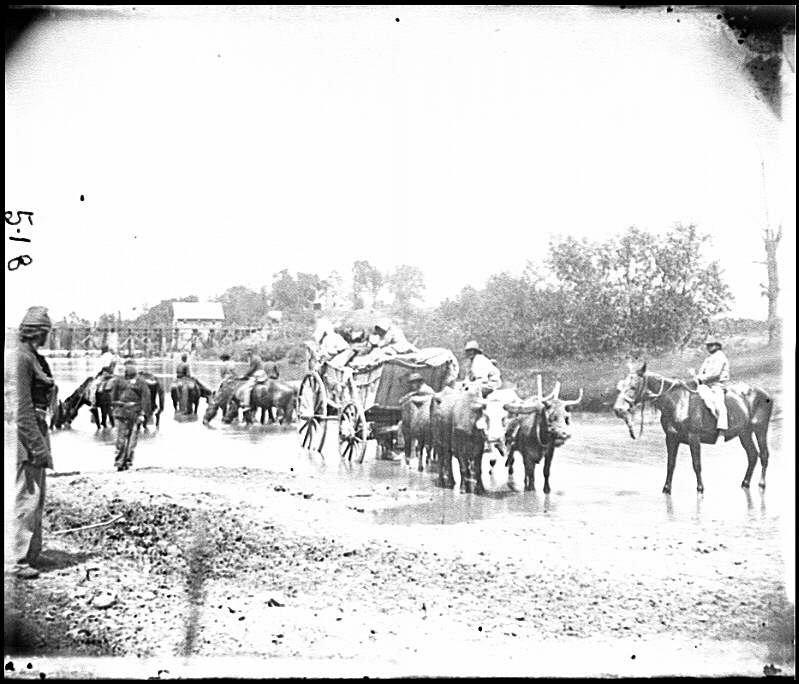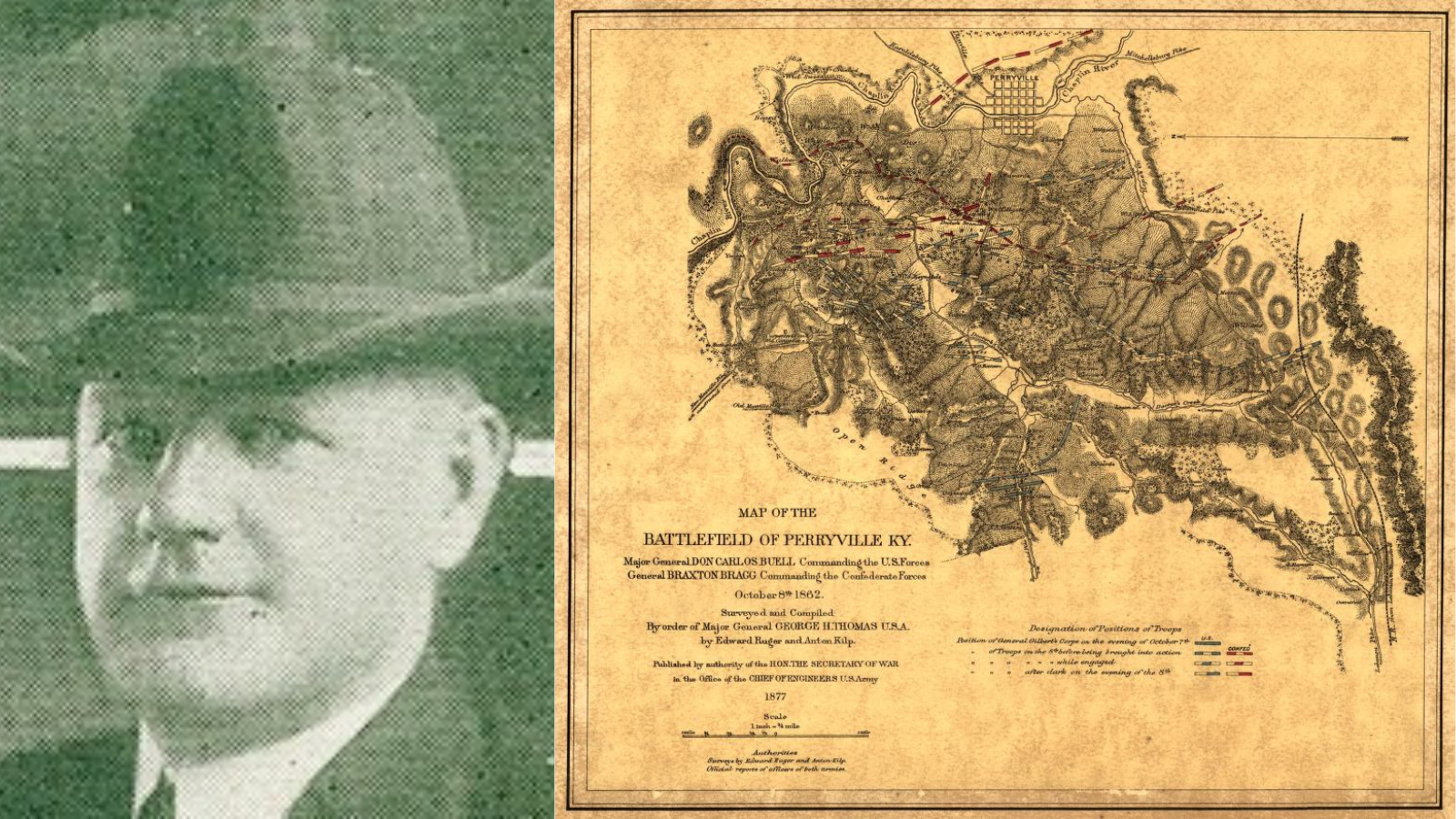The American Civil War began in April 1861 as a response to preserve the United States. Within a month, enslaved African Americans, like those from Loutre Island, seeking shelter behind Union lines shifted the war’s objectives. Many U.S. Army leaders, such as Major General Benjamin Butler, were unwilling to return these individuals to their disloyal enslavers. Hoping to deny the Confederacy of its labor force, U.S. officials recognized these self-emancipated people and harbored them as “contraband of war.” By running away from slavery, these Black Americans helped make emancipation a strategical component of preserving the Union.
During 1861 and 1862, Black freedmen and women arrived at U.S. military posts in such great numbers that newspapers often described them as “stampedes.” Hoping to legitimize their contraband policy, Congress passed An Act to Make an Additional Article of War, which forbade the Army from returning self-emancipated persons to bondage; and the Second Confiscation Act, which freed the enslaved of disloyal masters. Passed in March and July 1862, respectively, these acts lent U.S. military legal authority to harbor freedmen and women and employ them as laborers.
These emancipation measures created a tenuous situation in the loyal slave states of Delaware, Kentucky, Maryland, and Missouri. This border region separated the free North from the slaveholding South, and while it officially remained part of the Union it maintained the institution of slavery. Loyalties here blurred as U.S. officials dealt with enslaved Blacks who “stampeded” to their lines. Unsure of whether their enslavers were loyal or not, the actions of these freedom seekers compelled civil and military leaders to champion increasingly broad federal emancipation policies.
In November 1862, a group of enslaved Missourians from Loutre Island (77 miles west of St. Louis) escaped across the Missouri River to federal territory in Hermann, Missouri. The Fourth Missouri Infantry and its commander, Captain Bathasar Mundwiller, allowed the group of refugees to pass through their lines. They settled throughout Gasconade County where many found work on farms. Some of the Loutre Island enslavers, however, hoped to claim the rights of loyal masters and persuaded a local sheriff to arrest and jail some individuals. The anti-slavery German population of Hermann armed themselves and threatened to free them. Known nationally as the “Loutre Island Stampede,” many White and Black Missourians watched to see how the U.S. government would respond.1
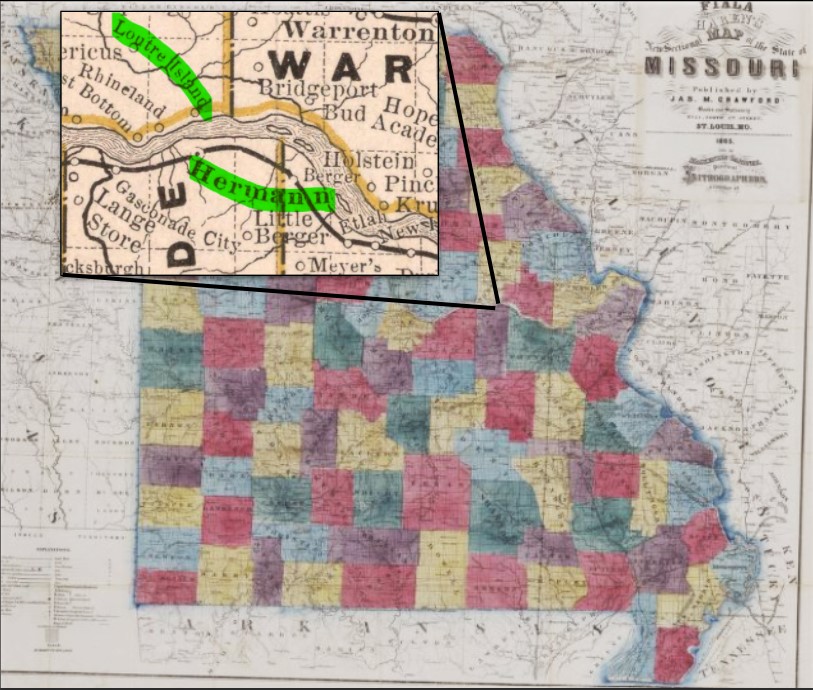
On December 24, 1862, Major General Samuel Curtis, commander of the U.S. Department of the Missouri, responded to the unrest in Hermann by issuing General Order No. 35. Curtis’ order authorized local commanders to determine the loyalty of slaveowners so the status of “contraband” could be established per the new federal laws.2 In this case, Curtis deemed Loutre Island slaveowners as disloyal and deferred to Mundwiller’s initial decision to harbor the refugees under the Army’s protection.
While it is hard to identify self-emancipated individuals, they probably belonged to local enslavers. Census and military record reveals that one man, John Pitzer, was likely a refugee who reached Union lines at Hermann.3
Pitzer first appears in official records on September 15, 1863, in St. Louis when he mustered into Company K of what became the 56th U.S. Colored Infantry.4 Initially little evidence connected him to Loutre Island or the city of Hermann. His enlistment record, possibly by design, left his free-or-enslaved status ambiguous, and listed his birth in a different county.
Nonetheless, in 1866, a White man named James Pitzer of Loutre Island filed a compensation claim for John Pitzer’s military service. Claiming to be his owner, James’ claim provides a possible link between John and the Loutre Island Stampede.
In 1864 and 1866, respectively, Congress passed legislation that allowed loyal border state slaveholders up to $300 compensation for the military service of their bondsmen. James hoped to benefit from this policy by claiming John was not contraband but instead the property of a loyal slaveholder. James took an oath and even had friends testify to his unionist sentiment, but he lacked John’s enlistment certificate and did not sign his consent on the muster papers.5 This implies that John escaped and volunteered on his own accord. It is unlikely that James received compensation without the necessary documents and because Congress halted slave claims in 1867, but his effort reveals that he lived in Loutre Island and had lost a bondman because of the U.S. Army.6 While there is no record of any Pitzers in the November 1862 Loutre Island Stampede, military and compensation records imply that John lived in the area around that time and had escaped from bondage.
In any case, the Loutre Island slave stampede is significant as it pressured U.S. officials to constantly adapt its emancipation policy to conditions on the ground. In January 1863, President Abraham Lincoln rationalized the Emancipation Proclamation, in part, as a reaction to freed people “stampeding in Missouri” and across the country.7 Accordingly, the Loutre Island Stampede, and John Pitzer’s possible participation in it, is significant as it forced U.S. officials to address Black emancipation and make it a federal war aim.
Corporal John Pitzer died of cholera on August 14, 1866, prior to mustering out of the army.8 His body was buried along Mississippi River between Helena, Arkansas, and St. Louis, Missouri. He is memorialized on the 56th USCI’s (United States Colored Infantry) monument in Jefferson Barrack National Cemetery in St. Louis, Missouri (Section 57 Site 15009).

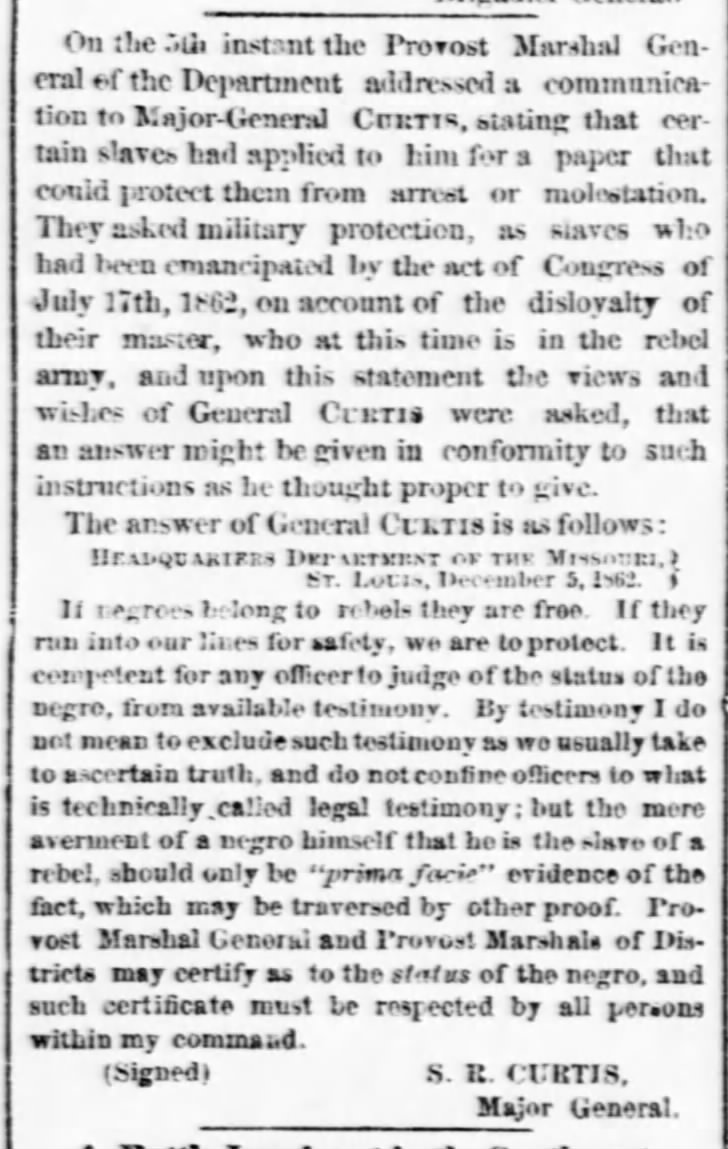
Footnotes
- Cooper Wingert, “Slave Stampedes on the Missouri Borderlands: The 1862 Loutre Island Stampede,” A Joint National Park Service – House Divided Project Research Initiative, June 8, 2020. ↩︎
- Maj. Gen. Samuel R. Curtis The War of the Rebellion: A Compilation of the Official Records of the Union and Confederate Armies (Washington: Government Printing Office, 1891), series 1, vol. 22, pt. 1, 868. ↩︎
- Ancestry.com. 1860 U.S. Federal Census – Slave Schedules [database on-line]. Lehi, UT, USA: Ancestry.com Operations Inc, 2010, citing: United States of America, Bureau of the Census. Eighth Census of the United States, 1860. Washington, D.C.: National Archives and Records Administration, 1860. M653, 1,438 rolls. ↩︎
- “Compiled Military Service Records of Volunteer Union Soldiers Who Served the United States Colored Troops: 56th-138th USCT Infantry, 1864-1866,” database and images, image of Corporal John Pitzer’s enlistment card; citing “Compiled Military Service Records of Volunteer Union Soldiers Who Served the United States Colored Troops: 56th-138th USCT Infantry, 1864-1866,” National Archives Catalog ID: 300398, Record Group 94, Roll 56th_USCT_INF_roll_26, National Archives, Washington, D. C. ↩︎
- “Compiled Military Service Records of Volunteer Union Soldiers Who Served the United States Colored Troops: 56th-138th USCT Infantry, 1864-1866,” database and images, image of James Pitzer’s compensation application and oath of allegiance; citing “Compiled Military Service Records of Volunteer Union Soldiers Who Served the United States Colored Troops: 56th-138th USCT Infantry, 1864-1866,” National Archives Catalog ID: 300398, Record Group 94, Roll 56th_USCT_INF_roll_26, National Archives, Washington, D. C. ↩︎
- “Compiled Military Service Records of Volunteer Union Soldiers Who Served the United States Colored Troops: 56th-138th USCT Infantry, 1864-1866,” database and images, another image of James Pitzer’s compensation application which directly mentions Loutre Island, Hermann, and Gasconade County as his and Corporal John Pitzer’s location; citing “Compiled Military Service Records of Volunteer Union Soldiers Who Served the United States Colored Troops: 56th-138th USCT Infantry, 1864-1866,” National Archives Catalog ID: 300398, Record Group 94, Roll 56th_USCT_INF_roll_26, National Archives, Washington, D. C. ↩︎
- Wingert, “Slave Stampedes on the Missouri Borderlands: The 1862 Loutre Island Stampede,” A Joint National Park Service – House Divided Project Research Initiative. ↩︎
- “Compiled Military Service Records of Volunteer Union Soldiers Who Served the United States Colored Troops: 56th-138th USCT Infantry, 1864-1866,” database and images, image of Corporal John Pitzer’s enrollment card which notes the circumstances of his death; citing “Compiled Military Service Records of Volunteer Union Soldiers Who Served the United States Colored Troops: 56th-138th USCT Infantry, 1864-1866,” National Archives Catalog ID: 300398, Record Group 94, Roll 56th_USCT_INF_roll_26, National Archives, Washington, D.C. ↩︎
By Jacob Klinger
National Cemetery Administration history intern and West Virginia University doctoral student
Share this story
Related Stories
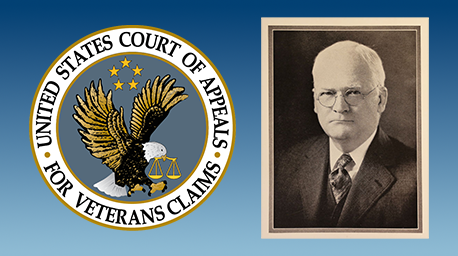
Featured Stories
A Brief History of the Board of Veterans’ Appeals
On July 28, 1933, President Franklin Delano Roosevelt signed Executive Order 6230 creating the Board of Veterans’ Appeals (BVA). The BVA was created as part of the Veterans Administration (VA), which had been established only three years earlier.
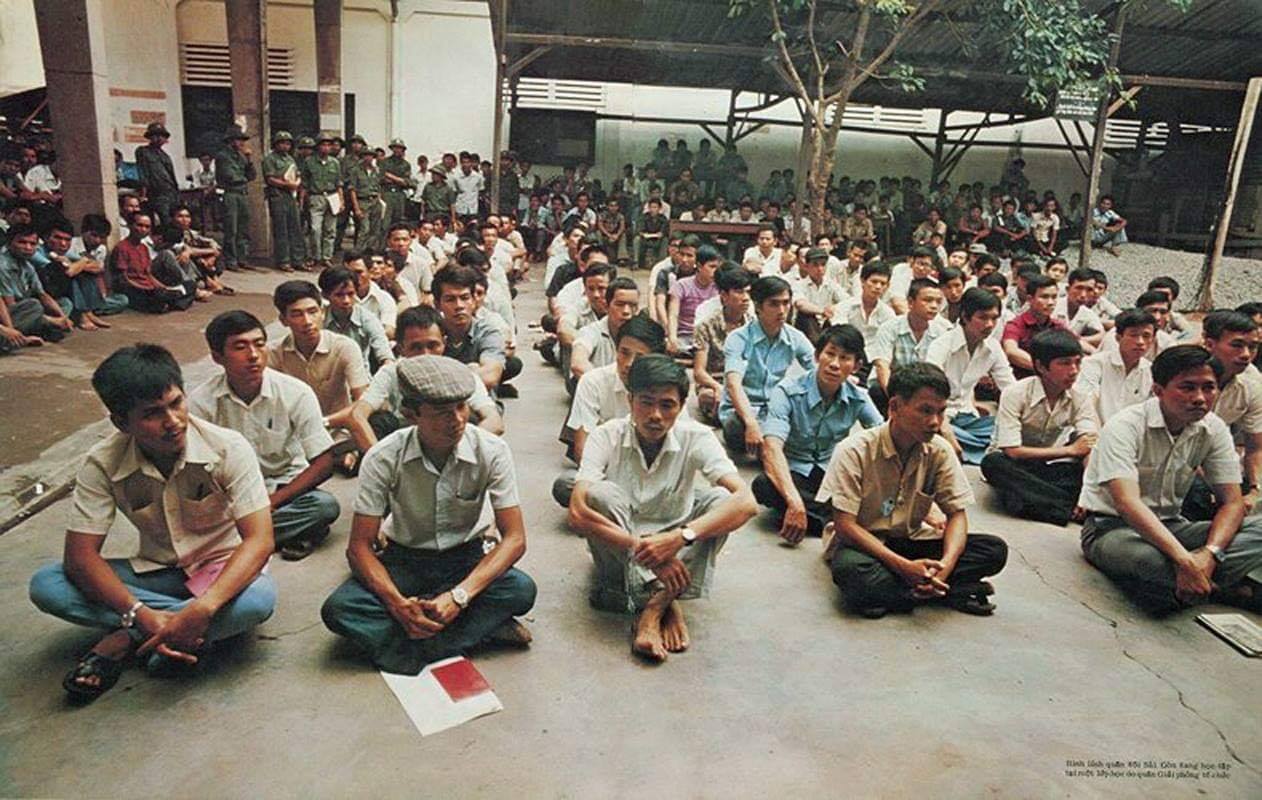
Featured Stories
The Fall of Saigon 1975: A South Vietnamese Military Physician Remembers
"There was chaos in the streets when I made my way to the hospital on the morning of April 30, 1975. In a place of order, there was now great confusion. The director and vice director of the hospital were gone, making me, the chief of medicine, the highest-ranking medical officer."


